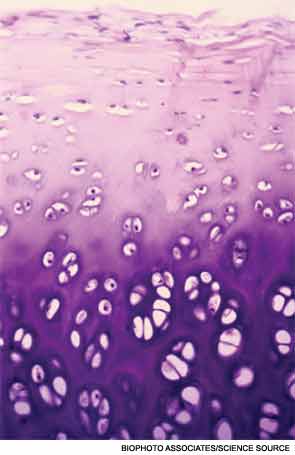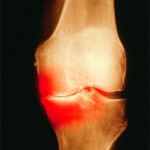
MADRID—Progress continues to be made in efforts to improve management of osteoarthritis and generate new therapies, researchers reported here at the European League Against Rheumatism (EULAR) 2013 Annual European Congress of Rheumatology, held June 12–15, with continued evidence on the benefits of knee distraction and progress in harnessing the effects of stem cells.
Distraction Frame Can Encourage Joint Repair
Simon Mastbergen, PhD, assistant professor of rheumatology at the University Medical Center Utrecht in The Netherlands, reviewed the apparent benefits of knee joint distraction in late-stage osteoarthritis.
In the procedure, pins are drilled through the bone just above and below the knee, and a spring-loaded “distraction frame” is fitted onto the leg, taking a load off the knee by creating a small space between its cartilaginous surfaces. The frame stays on for two months.
The technique has proven to have long-term clinical effectiveness for end-stage ankle osteoarthritis.
His research group has found improvements in the thickness and volume of knee cartilage after a year and the benefit has been sustained through five years, although results beyond five years remain unclear.
X-rays taken while patients were bearing full weight on the knee showed that the tissue that had formed worked structurally.1 Plus, Dr. Mastbergen said, collagen-type II biomarkers increased during this healing process, suggesting that the newly formed cartilage tissue is hyaline cartilage, and not more spongy fibrocartilage.
Several factors are likely at work in this healing process, Dr. Mastbergen said. The absence of stress on the joint encourages healing, he said. Plus, intermittent, intraarticular fluid pressure occurs because patients are encouraged to walk while in the frame. “This is important, first of all, for the nutrition of cartilage, but also, it appears from the in vitro [analyses] that there is an effect in the cartilage itself,” he said.
There is also temporary periarticular osteopenia in which “sclerotic bone becomes less sclerotic,” he said. “The bone gets a little bit softer and there’s a little bit of softening in the mechanical stress on the cartilage itself.”
Researchers have also found that mesenchymal stem cells adhere to a far greater degree to a diseased distracted joint than a nondistracted one.
Further study on the mechanics of the process—from the absence of stress to the trophic factors at work—can help refine treatment approaches, he said. “Now we have a system where we at least see the regeneration of the joint,” Dr. Mastbergen said.
